Kotgarh In Shimla Known As India’s Apple Bowl And Is A Must-Visit Destination
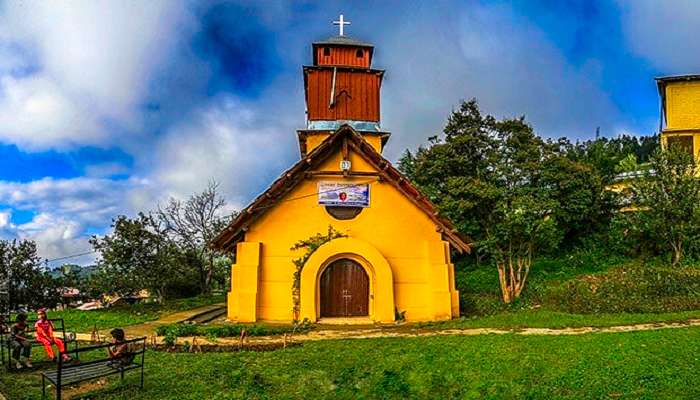
Regarded as the ‘Apple Bowl of India’, Kotgarh offers the opportunity to explore a valley rich with historical references and pristine beauty. Despite being close to some of the country’s most heavily flocked tourist spots, this village has remained relatively untouched by the humongous influx of tourists into the state of Himachal Pradesh. It was in this village that the very first American apple tree was grown. It was grown in India in 1916. Thanedhar, regarded as the commercial hub of Kotgarh, is where the pioneering orchards of Stokes are located.
Location Of Kotgarh
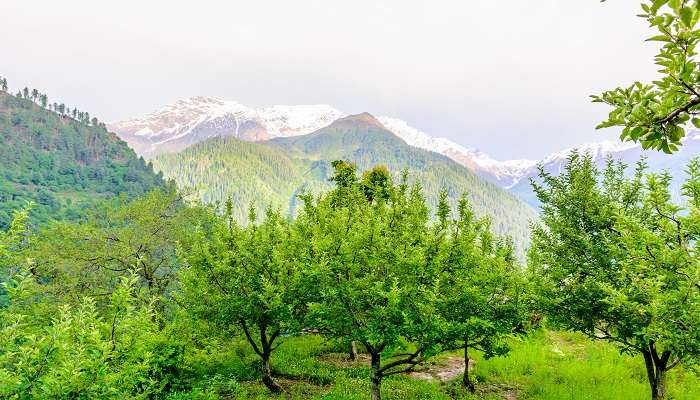
Kotgarh is a beautiful valley located at an elevation of 7,000 feet from sea level. This picturesque valley not only overlooks the Sutlej River, the longest of the five rivers that flow through the undivided Punjab region but also offers stunning views of the snow-capped Himalayas in the distance.
Located on the historic Hindustan-Tibet road, this quaint town is just two hours away from the hustle and bustle of Shimla. This crowd-free village is comfortably accessible and is best explored on foot. The nearest railway station is Shimla Railway Station, about 77 km away. It is a two-hour drive to reach Kotgarh, whereas the nearest airport is Shimla Airport, also referred to as Jubbarhatti Airport.
Must Read: Offbeat Places Near Shimla
Popular Destinations Near Kotgarh
1. St Mary’s Church
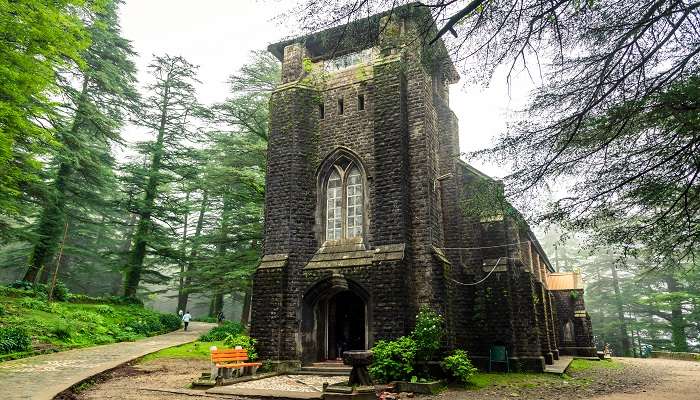
The gorgeous St Mary’s Church is one of the main attractions of Kotgarh. It brightens the atmosphere with its Gothic architectural style and proudly reminds visitors of the colonial era. The wooden church, built in 1872 by London’s Church Missionary Society, boasts stained glass windows and traditional wooden benches for devotees to sit upon.
Surprisingly, an inscription in Urdu hangs on the walls of the church. Every inch of this structure exudes old-world charm. The church is packed with life every Sunday morning when a mass happens around 11 am. People come all decked up for the mass and read from a Bible written in Hindi. Adjoining the church is an old school built at the same time as the church.
Suggested Read: Monuments In Himachal Pradesh
2. Thanedhar
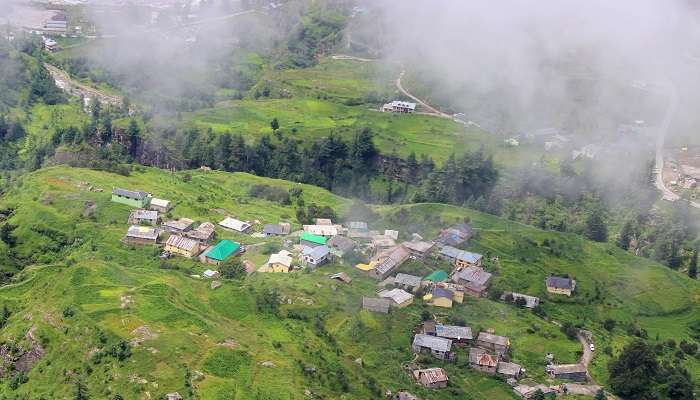
The village of Thanedhar, also known as the commercial hub of Kotgarh, is located at a staggering elevation of 8,000 feet and is a three-hour drive from Shimla. The journey is no less mesmerising than the destination. As the famous tight Himalayan road twists and turns from one spur to another, one relishes the breathtaking views of different valleys from all angles. The village is also known for its apple reserves, which provide the ground for growing many other fruits, such as cherries and strawberries.
3. Paramjyoti Temple

Made of grey stone and Burma teak, The Paramjyoti Temple is one of the most visited sites in Himachal Pradesh. Like St Mary’s Church, it has stood the test of time. It was built in 1937 by Stokes. Unusual for a temple, this one has no idols; just a painting in the inner area.
Suggested Read: Offbeat Places In Shimla
4. Tani Jubbar Lake
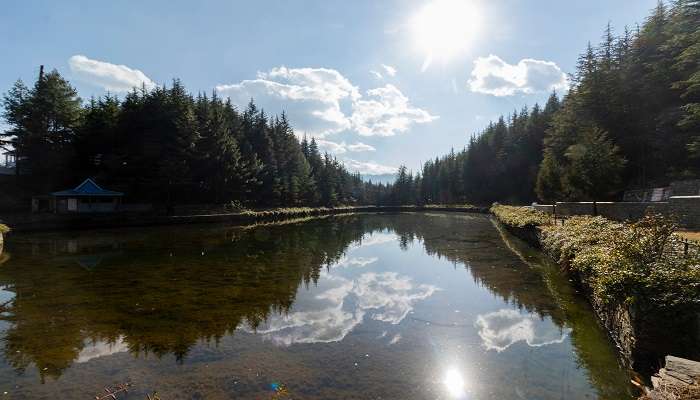
Tani Jubbar Lake is approximately 70 km from Shimla, the erstwhile summer capital of British India, towards Thanedhar, Kotgarh. This destination is also accessible by bus, as Narkanda Bus Station is only 10 km away. This lake is situated at 2350 m to 2400 m above sea level. The average temperature is 21º C during the summer, while in winter, it can dip to 2º C. Organised by the Gram Panchayat of Jarol, Kotgarh, The Tani Jubbar Fair is held annually at the Tani Jubbar Lake between 28th and 30th May.
5. Hatu Peak
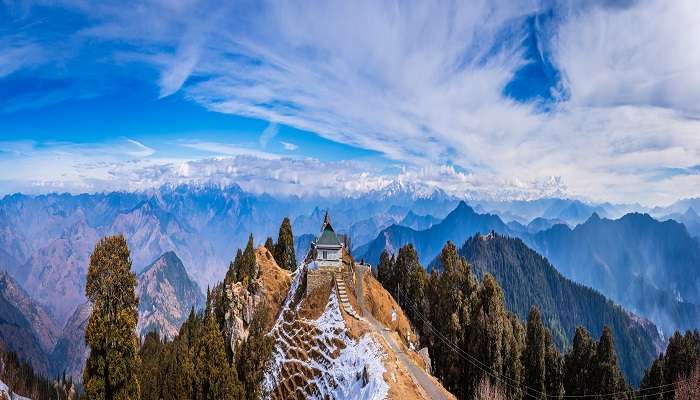
One of the highest peaks in the region, the Hatu Peak, stands at an astounding elevation of 3400 metres above sea level. It is 7 km away from Narkanda. The peak is between March and October, and it is worth visiting as the temperature is tolerable at around 8-20 degrees Celsius, as opposed to -10 degrees Celsius during the winter.
Suggested Read: Lakes In Himachal Pradesh
6. Shimla
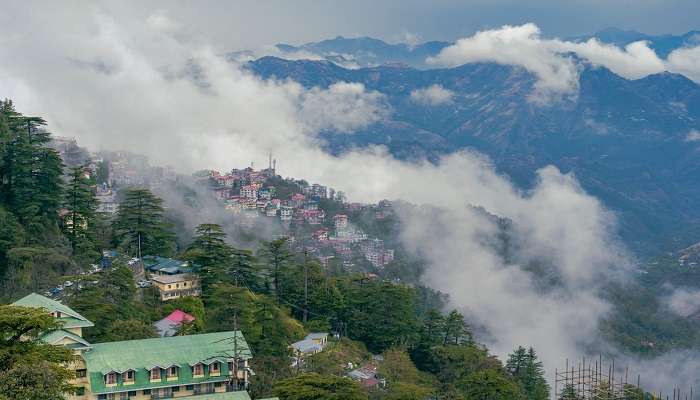
Shimla was designated the summer capital of British India in 1864. But the city did not lose its significance after independence. First, it was made the capital of East Punjab, and later, when a new state of Himachal Pradesh was carved from Punjab, Shimla was made the capital of Himachal Pradesh.
But this city has not completely lost the British touch. It is still home to several buildings styled in Tudorbethan and neo-Gothic architecture dating from the colonial era. Major tourist attractions include the Shri Hanuman Jakhu (Statue), Jakhu Temple, Viceregal Lodge, Christ Church, Mall Road, The Ridge, and Annadale. Shimla also boasts the largest natural ice skating rink in India and South Asia. Apart from being a tourism centre, the city is also an educational hub, with several colleges and missionary schools set up by the British to spread Western education.
History Of Apple Cultivation In India
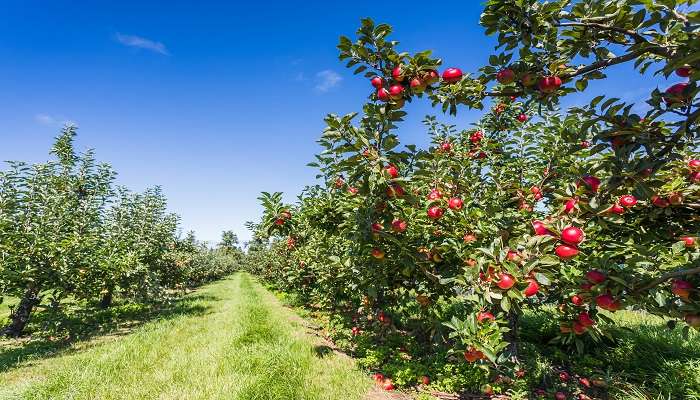
In 1912, Stokes purchased a vastly spread farmland in Kotgarh. He devoted himself to improving the farmland he had purchased and could access resources largely unknown to the other villagers engaged in this endeavour. He figured out a new strain of apples developed by the Stark brothers of Louisiana, United States, as suitable to the Simla Hills and then cultivated this strain on his farm in Kotgarh. This was in 1916. The resulting bumper crops, coupled with Stokes’ access to the European traders who managed Delhi’s export business, inspired the other farmers to follow the path discovered by Stokes, who also helped them wholeheartedly in every way possible. Gradually, he purchased more land and applied it to growing apple cultivars which the villagers would subsequently use to seed their farms. As a result, the local economy was completely revitalised.
Further Read: Trekking Near Shimla
Now that you have a list of things to remember for your next vacation to explore Kotgarh, the hidden gem of Himachal Pradesh, make sure you plan your next trip to Shimla and duly visit these fabulous spots for the experience of a lifetime. Don’t miss out on these lucrative offers, and book your next tour now!
For our editorial codes of conduct and copyright disclaimer, please click here.
Frequently Asked Questions About Kotgarh In Shimla
Which is the most picturesque church in Shimla?
St. Mary’s Church in Kotgarh was built in 1872 and has stood the test of time. To this day, a mass happens every Sunday at 11 a.m., bringing life to the church.
What are the road structure in Kotgarh?
The infrastructure is well-developed, and the driving routes are easily accessible. But, this location is best explored on foot.
Is Kotgarh popular among female travellers?
The state receives one of the highest numbers of tourist visits in India. It is safe for female travellers and solo travellers.
Where can I find orchards in Shimla?
Thanedhar, regarded as the commercial hub of Kotgarh, is where the pioneering orchards of Satyanand Stokes are located.
Which is the most famous fruit of Himachal Pradesh?
Apples of Himachal Pradesh, which were first planted in Kotgarh in 1916, are well-known for their high quality.
People Also Read:
Adventure Sports In Shimla Places To Visit In Shimla Winter In Shimla

Get ready to wander the world through amazing visual tours that we provide via our blogs and stories. As a content writer, I love sharing incredible travel experiences that inspire readers to plan their own adventures and create unforgettable memories. From planning to execution, everything has already been served in these amusing tales. Let’s explore the world together, one destination at a time!











